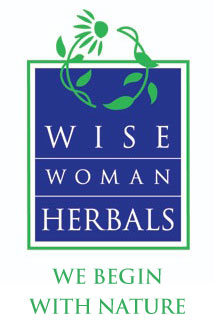Questions & Answers with Dr. Koenig, D.C., President of Wise Woman Herbals®
Q: What distinguishes Wise Woman Herbals from other tincture companies?
A: It is the sum of all the steps that we take; from sourcing ingredients to creating the finished handmade product that distinguishes us from other companies. First and foremost, we remain purists. We feel that producing traditional whole-herb supplements, which are supported by thousands of years of traditional use, are most efficacious and desirable. Second is the effort we put forth in sourcing ingredients. Without exception, we begin with the highest quality plants and ingredients that nature has to offer. Third is our unique processing technique. We continue to process herbs by performing labor-intensive macerations, daily agitation, and when indicated we repeat the process by performing multiple macerations. This allows us to preserve all of the plant constituents and end up with a completely natural herbal product as intended by nature.
Q: How do you respond to people who feel there is little to no difference between tinctures produced by one manufacturer to the next?
A: A practitioner can take all of the steps necessary in taking a patient’s history, rendering a proper diagnosis and suggesting a valid treatment plan, and then not reap the reward of a positive outcome due to inferior supplements; I have personally experienced this in practice. It is essential to use products that you have the highest regard for and the utmost confidence in.
Q: Why can’t I find Wise Woman Herbals products in retail stores?
A: Most tincture companies derive the bulk of their sales through retail distribution channels- to large health food store chains and other retail outlets. We feel the best outcomes are from recommendation and management by qualified licensed health care practitioners with a focus in botanicals. This protects the consumer, our customers and our brand.
Q: The name Wise Woman Herbals can be misleading. Where did the name originate?
A: The name does lead people to think of us as a gender specific product line. But we have something for both genders, adults, children and even for our pets, which are being recommended by holistic veterinary practitioners. The name Wise Woman Herbals was chosen to honor the early European practitioners who were primarily [wise] women working with plants indigenous to their area and were revered as the village healers. We embrace their values and adhere to a similar herbal tradition.
Q: How has the FDA’s Good Manufacturing Practices had an affect on Wise Woman Herbals?
A: We have strived to maintain cGMP compliance for many years. As a member of the American Herbal Products Association (AHPA) we participated in their roundtable discussions, the results of which were presented to the Food and Drug Administration. This was an opportunity to provide input on the GMP guidelines from a unified voice from our industry. After many years of preparation, Wise Woman Herbals earned distinction through compliance with FDA’s good manufacturing practices in 2008, verified by a 3rd-party audit.
Q: What further insights would you like to share about your company?
A: I hope that by reading this, people will gain an appreciation for Wise Woman Herbals® being a company with a conscience. Our natural desire to be of service and play an important role in natural health care is sincere. Every member of the Wise Woman Herbals staff is cognizant of the vital role they play in producing supplements intended to enhance an individual’s sense of well being and quality of life. In closing, I would like to thank our loyal customers’ for their ongoing support and for allowing us to contribute to making this a better, happier and healthier world.
